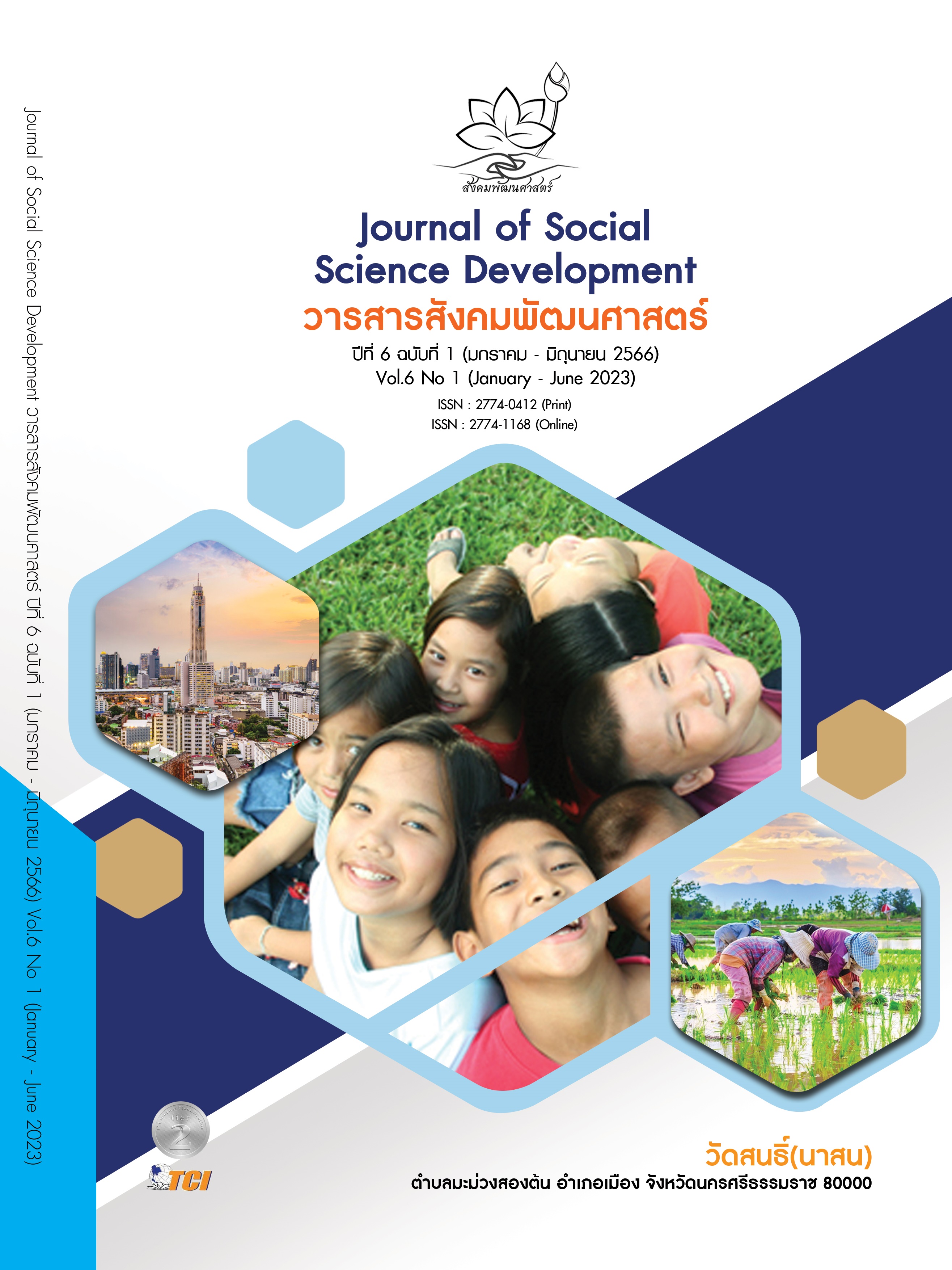USING THE THAI HEALTH DEE PROGRAM TO ASSESS HEALTH STATUS AND MEDICAL TECHNICAL HEALTH LITERACY IN THE PREVENTION AND PROMOTION OF LONG-TERM HEALTH AMONG HEALTHY PEOPLE : A CASE STUDY OF SOMDET PRAYUPRACHAPUA HOSPITAL, PUA DISTRICT, NAN PROVINCE
Main Article Content
Abstract
The objectives of this research were : 1) to study the situation of health literacy in medical technology, and 2) to assess the health literacy of healthy people. It is mixed methods research divided into 2 parts: Part 1 Quantitative Studies. The population is 240 people who came for health check-ups at the health check-up center at Pua Crown Prince Hospital, with blood tests in 2020-2021 being selective. It's a purposive sampling. The tools used consisted of a health literacy questionnaire. And Part 2 was a qualitative study with a sample of 12 people. It's a purposive sampling. The tool is an outlined interview form. Collect data through group discussions and participatory observation. The results of the research revealed that 1) Health knowledge in medical techniques, i.e. the blood test of the population group, were at the levels of partially understood, very understood and very well understood, 56.3%, 34.6% and 6.3%, respectively. Participants chose annual self-check-up for long-term disease prevention rather than using the 3 A, 2 S, 79.2% and 50.4% principles, respectively (P-value =1.000), and participants preferred to use Thai Health Dee to assess their health status in prevention and promotion and long-term health self-management 99.2 percent. And 2) assessing the health literacy of healthy people, found that 99.2% were interested in using information technology innovations in Thai Health Dee program and 0.8% were not interested in using information technology innovations in Thai Health Dee program. The results of the study reflect The importance of assessing health status and health literacy in prevention and long-term health promotion among people.
Article Details

This work is licensed under a Creative Commons Attribution-NonCommercial-NoDerivatives 4.0 International License.
References
กองสุขศึกษา. (2560). การประเมินและการสร้างเสริมความรอบรู้ด้านสุขภาพ. เรียกใช้เมื่อ 17 กรกฎาคม 2560 จาก http//www.hed.go.th.
กองสุขศึกษา. (2561). เครื่องมือและโปรแกรมประเมิน HL และ HB ปี 2561. เรียกใช้เมื่อ 20 สิงหาคม 2561 จาก http://www.hed.go.th/linkHed/index/3142560.
คณะกรรมการอำนวยการจัดทำแผนพัฒนาสุขภาพแห่งชาติ ฉบับที่ 12 กระทรวงสาธารณสุข. (2560). แผนพัฒนาสุขภาพแห่งชาติฉบับที่ 12 พ.ศ. 2560-2564. เรียกใช้เมื่อ 17 กรกฎาคม 2560 จาก http://wops.moph.go.th/
บุญชม ศรีสะอาด. (2560). การวิจัยเบื้องต้น. กรุงเทพมหานคร: สุวีริยาสาส์น.
วิมล โรมา. (2560). การสำรวจความรอบรู้ด้านสุขภาพของประชาชนไทย อายุ15 ปี ขึ้นไป พ.ศ. 2560 (ระยะที่1). เรียกใช้เมื่อ 17 กรกฎาคม 2560 จาก https://www.hsri.or.th/
Nutbeam D. (2000). Health Literacy as a public health goal: a challenge for contemporary health education and communication strategies into the 21st century. Health Promotion International 2000, 15(3), 259-67.
WHO. (1998). Health Promotion Glossary. Retrieved กรกฎาคม 17, 2560, from https://www.who.int/publications/i/item/WHO-HPR-HEP-98.1
World Health Organization. (1948). Preamble to the Constitution of the World Health Organization as adopted by the International Health Conference. Geneva: World Health Organization.
Yamane, T. (1973). Statistics: an introductory analysis. New York: Harper & Row.
Zhou, W. & Chen, M. (2016). diabetes researchand clinical practice. Retrieved กรกฎาคม 17, 2560, from https://www.elsevier.com/locate/diabres


